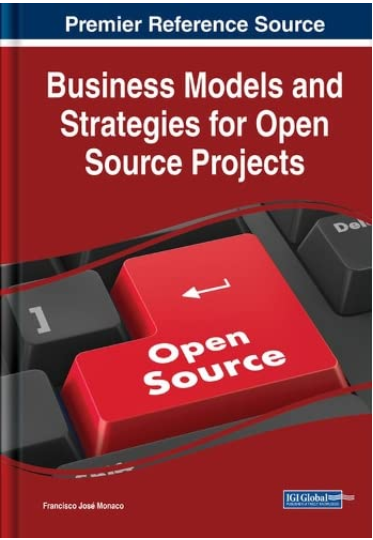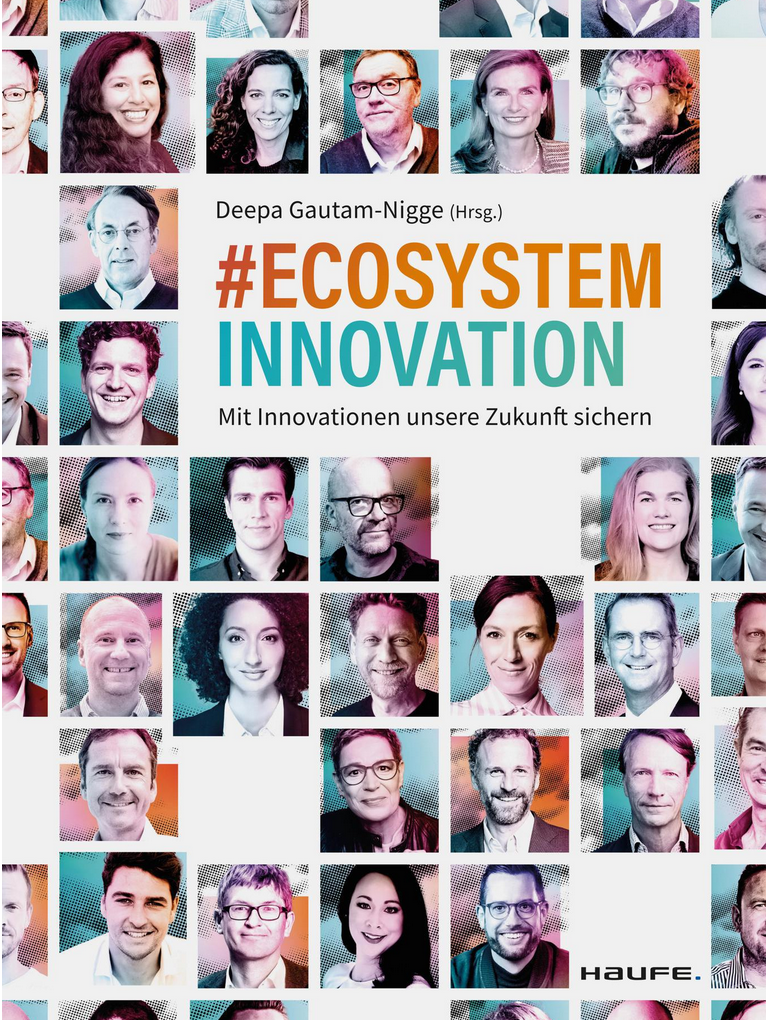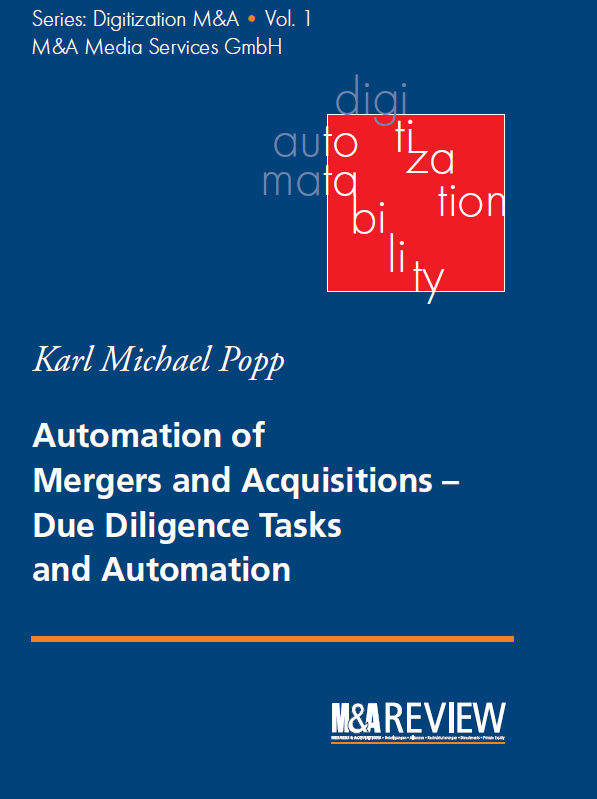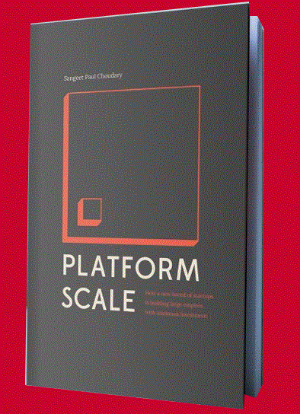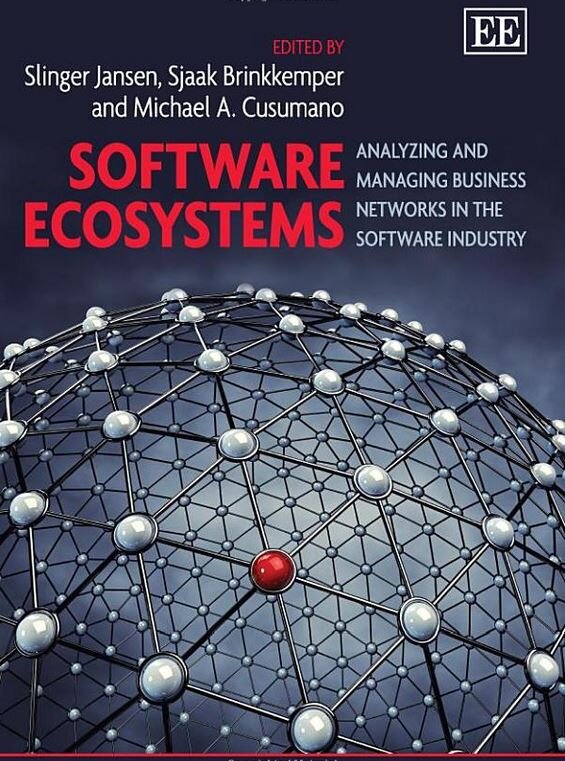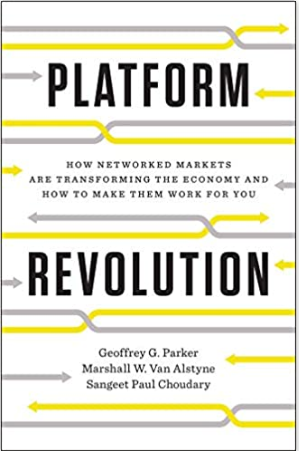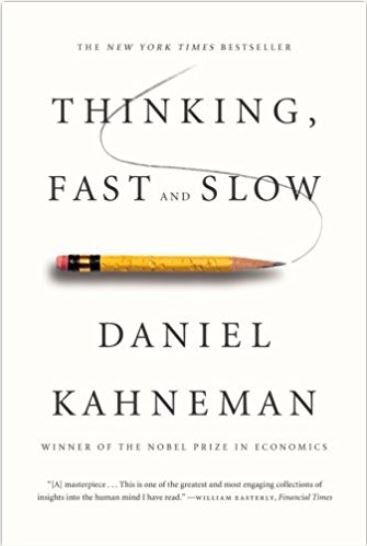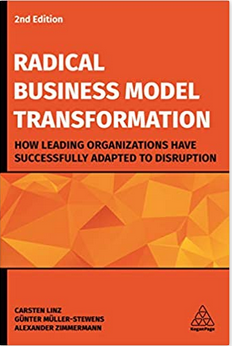
NEWS
OEM business model: join the European workshop on software ecosystems
The European Workshop on Software Ecosystems is an annual event which connects top notch researchers and business professionals in the field of software and platform ecosystems as well as business networks. Here is an example of a topic we will discuss at the event.
OEM
In an OEM scenario the software vendor provides OEM software to the software partner. The software partner sells the OEM software as part of his solution. Usually, the software partner charges no price for the OEM software, but for his own solution. This is the key difference between OEM and resell.
The software vendor delivers the OEM software to the partner, which pays a license fee and maintenance fee to the software vendor. The license fee for the OEM might be a share of the revenue of the partner product containing the OEM software. Or it might be a constant fee that applies per copy of the OEM software shipped to the customer.
Business Model Canvas for OEM software
In a generic view, the value proposition of outbound OEM for a customer (software vendor) is that the customer saves development cost and time and gets a quality product.
For customer segments, this business model is generally limited to software vendors but might also apply to hardware vendors shipping hardware with embedded software. Based on the specific functionality of the OEM software, it might be further limited to specific software vendors. Customer relationships to software vendors using the software are important. As a consequence, the network of partner companies is the main channel.
More details and background information can be found in these books:
What are the success factors In changing existing businesses to platform businesses?
The vital elements for achieving success encompass the establishment of an ecosystem, the generation of network effects, the application of data-driven decision-making, a willingness to engage in collaborations, and a focus on user-centric design. Instances of actual enterprises that have effectively shifted to platform-based models include the following:
1. Amazon: Amazon's transition involved the transformation from a mere online vendor to a platform-based entity through the opening up of its marketplace to external sellers, thereby establishing a vast array of products and services.
2. Apple: Apple's evolution entailed a shift from being product-centric to operating as a platform-based organization with the introduction of the App Store, which allowed developers to create applications for iOS devices and encouraged the formation of network effects.
3. Airbnb: Airbnb's progression towards a platform model was marked by the facilitation of connections between hosts and guests, the utilization of user data to customize experiences, and the cultivation of network effects within the realm of hospitality.
4. Uber: Uber's evolution from a conventional transportation service to a platform-based entity involved the linking of passengers and drivers through its application, the use of data for implementing flexible pricing strategies, and the global expansion of its services.
5. Salesforce: Salesforce's shift to a platform-centric organization was catalyzed by the implementation of a cloud-based CRM platform that interfaces with a variety of third-party applications, thereby fostering ecosystem growth and delivering data-driven insights for enterprises. These illustrations underscore how successful businesses have harnessed crucial factors to make the transition to platform-based operations, thereby stimulating growth and fostering innovation.
Like the topic? Participate in our workshop tickets here
More details and background information can be found in these books:
OEM business model: join the European workshop on software ecosystems
The European Workshop on Software Ecosystems is an annual event which connects top notch researchers and business professionals in the field of software and platform ecosystems as well as business networks. Here is an example of a topic we will discuss at the event.
OEM
In an OEM scenario the software vendor provides OEM software to the software partner. The software partner sells the OEM software as part of his solution. Usually, the software partner charges no price for the OEM software, but for his own solution. This is the key difference between OEM and resell.
The software vendor delivers the OEM software to the partner, which pays a license fee and maintenance fee to the software vendor. The license fee for the OEM might be a share of the revenue of the partner product containing the OEM software. Or it might be a constant fee that applies per copy of the OEM software shipped to the customer.
Business Model Canvas for OEM software
In a generic view, the value proposition of outbound OEM for a customer (software vendor) is that the customer saves development cost and time and gets a quality product.
For customer segments, this business model is generally limited to software vendors but might also apply to hardware vendors shipping hardware with embedded software. Based on the specific functionality of the OEM software, it might be further limited to specific software vendors. Customer relationships to software vendors using the software are important. As a consequence, the network of partner companies is the main channel.
More details and background information can be found in these books:
What are the 5 key success factors of cloud platforms that offer artificial intelligence?
The European Workshop on Software Ecosystems is an annual event which connects top notch researchers and business professionals in the field of software and platform ecosystems as well as business networks. Here is an example of a topic we will discuss at the event.
The 5 key success factors are scalability, security, flexibility, integration capabilities, and cost-effectiveness. Examples:
1. Scalability - AWS offers scalable AI services like Amazon SageMaker, allowing users to easily scale AI models based on demand.
2. Security - Microsoft Azure provides robust security features for AI applications, ensuring data protection and compliance with industry standards.
3. Flexibility - Google Cloud Platform offers a wide range of AI tools and APIs, providing flexibility for developers to build custom AI solutions.
4. Integration Capabilities - IBM Watson integrates seamlessly with various cloud platforms, enabling AI applications to work cohesively with other software systems.
5. Cost-Effectiveness - Oracle Cloud offers cost-effective AI services, allowing businesses to leverage AI capabilities without incurring high expenses.
Like the topic? Participate in our workshop tickets here
More details and background information can be found in these books:
Disruptive business models: join the European workshop on software ecosystems
The European Workshop on Software Ecosystems is an annual event which connects top notch researchers and business professionals in the field of software and platform ecosystems as well as business networks. Here is an example of a topic we will discuss at the event.
Software industry and disruption
The software industry is all about disruptive business models. The key question remains: How do you plan and build disruptive business models? What are examples of disruptive business models? What did companies with distruptive business models do different than other companies? How can a company offer for the prize of zero? All of these questions can be answered by looking at disruptive business models.
Business model canvas and disruption
Let us adress these questions based on the business model canvas. The business model canvas is a well known approach by Osterwalder to model business models. Osterwalder published his approach in the book Business Model Generation: A Handbook for Visionaries, Game Changers, and Challengers.
A business model is described there on a "canvas" that shows e.g. the value proposition, cost, channels, revenue, suppliers, key resources and key partners.
Here is an example of Google´s search business on the business model canvas:
Where in the business model can disruption happen?
Now that we know the business model canvas, we can take disruption mechanisms and put them into the canvas. I use the information from Mark W. Johnson´s ideas on seizing the white space and put them on the canvas. And i use information from Profit from Software Ecosystems book.
Let me explain some of the boxes below.
Offer standardized low price version of high price product
There is a high price product, like secure data rooms. You build disruptive business models by offering that product in a standardized low price version. Examples i like are
UberX, a service from Uber that offers cheap transportation services
Motel One which is a motel chain that offers very affordable overnight stays
Securedocs, who disrupt the secure data room industry by offering a cheap yet safe data room for companies.
Shop at home with device
Nothing is more convenient than shopping at home. Technology can put that convenience to a new level.
Here are my most-liked examples:
Amazon has invented Amazon Fresh, a device that can scan barcodes of products at home or can listen to your wishes. Just say: chocolate sprinkles and the sprinkles will be at your door the next morning.
Amazon Fire scans for products that can be ordered, from Amazon, of course. no more searching for names or products in catalogs. scan, shop, done.
hybris Commerce Suite: lets you shop on any device (smart tv, Ipad, Phone)
Integrate and combine channels
In some industries there are opportunities in integrating and combining channels to build disruptive business models. No matter how you reach customers to sell goods, no matter where customers turn their attention, you might leverage all these channels as one.
Here are my favorites:
Stylight social shopping. Stylight has integrated normal people showing off purchased apparel in social networks with a shopping experience. Pictures of these people can appear in the shop and items can be ordered right away.
Prize of zero fed by other revenue streams
There is no better way to disrupt than offering a product or service for a price of zero. But you have to make sure you get some compensation or you finance that business model with revenues from your other business models. Advertising revenue has been stressed a lot in the software business for this purpose, but it only works in rare cases. So, which other sources of revenue to fund a low price are there? Here are my examples:
Google search. The service offered by Google is free. If you look at it more carefully, there is a compensation. it is data about the interest and the searches a user starts. This data is sold to advertisers. Revenue from advertising feeds free search.
Communities instead of sales force
Outsourcing for the prize of (almost) zero and scaling your salesforce dramatically. These are the benefits of leveraging product communities for supporting, maintaining and even selling your products. Network effects can accelerate this effect even more. Examples are:
Nespresso community
Skype was and is mostly promoted by its community. the network effects of having additional people join.
Open Source communities
Do more to adress the job
Just do a little more than your competition. Sounds easy, but it might take some hard thinking to deliver. Here are examples:
German epost does not only store your mail while you are away from home, they will scan all incoming letters and provide them online for you to look at it.
Life is good. Social retail. Shopping is great. Might be even greater if you are doing good while you are shopping.
Join the European workshop on software ecosystems to learn more.
Literature
Content on this site comes from the following book and the ones in the gallery:
Mergers and Acquisitions in the Software Industry
other background literature is:
Osterwalder, Business model generation
Mark W Johnson, Seizing the white space
R. Meyer, K.M. Popp, Profit from software ecosystems
Current hot research topics in software ecosystems and platforms
In the current landscape of research concerning software ecosystems and platforms, there is a notable surge in interest towards various trending subjects.
A significant focal point revolves around the evolution and dynamics of software ecosystems, investigating the progression of these intricate systems comprising interdependent software elements and entities over time. Scholars are immersing themselves in the underlying mechanisms steering ecosystem development, including platform governance, ecosystem configuration, and the involvement of key stakeholders. Another pivotal subject entails platform ecosystems and their influence on innovation and competitive dynamics. Academics are scrutinizing how the dynamics of platforms impact strategies for innovation, competitive interactions, and the generation of value within ecosystems.
Grasping the interconnectedness among platform governance, ecosystem structure, and innovation is paramount for organizations aiming to excel in digital markets. Moreover, the advent of novel technologies like blockchain, artificial intelligence, and the Internet of Things is reshaping software ecosystems and platforms. Researchers are probing into how these technologies disrupt conventional ecosystems, forge fresh avenues for collaboration, and affect ecosystem governance and sustainability.
Furthermore, the ascent of open-source software and collaborative development models is reshaping the terrain of software ecosystems. Investigations are analyzing the ramifications of open-source communities, decentralized development processes, and the contribution of participants in shaping ecosystem dynamics and platform advancement.
On the whole, the realm of research on software ecosystems and platforms is dynamic and interdisciplinary, encompassing realms such as network theory, innovation management, digital platforms, and software engineering. By tackling these trending subjects, researchers aspire to offer insights that can aid organizations in navigating the intricacies of contemporary software ecosystems and harnessing platforms for sustainable expansion and innovation.
Like the topic? Participate in our workshop tickets here
More details and background information can be found in these books:
Google business models and revenue sources #ewseco
Google functions under diverse business models and revenue streams. Presented here are five illustrations:
1. The primary source of revenue for Google is the advertising displayed on its search engine and various platforms such as YouTube. In 2020, Google's advertising revenue reached approximately $147 billion, making a substantial contribution to its profits.
2. Cloud Services: Google Cloud provides cloud computing services to enterprises, generating revenue through subscription-based frameworks. The revenue from Google Cloud in 2020 was about $13 billion, displaying an increasing impact on profits.
3. Sales of Hardware: Google markets hardware items like Pixel smartphones, Nest smart home gadgets, and Chromecast. The revenue from hardware sales in 2020 was about $10 billion, with profit margins varying among product categories.
4. Play Store: Google gains revenue from the Play Store by receiving a share of app sales and in-app transactions. The revenue from the Play Store in 2020 was estimated at $10 billion, with substantial profit margins attributed to the digital essence of the platform.
5. Licensing and Other Services: Google also derives revenue through licensing contracts, collaborations, and other services such as Google Workspace (previously known as G Suite). These services collectively contribute to Google's overall revenue and profits.
Like the topic? Participate in our workshop tickets here
More details and background information can be found in these books:
The top 5 global companies with aggregator business models
The European Workshop on Software Ecosystems is an annual event which connects top notch researchers and business professionals in the field of software and platform ecosystems as well as business networks. Here is an example of a topic we will discuss at the event.
The top 5 global companies with aggregator business models, revenue, and growth rate in the last 5 years are:
1. Amazon - Revenue: $386 billion (2020), Growth Rate: 21% (2020-2024).
2. Uber - Revenue: $14.1 billion (2020), Growth Rate: 25% (2020-2024).
3. Airbnb - Revenue: $3.4 billion (2020), Growth Rate: 30% (2020-2024).
4. Booking.com - Revenue: $15.1 billion (2020), Growth Rate: 18% (2020-2024).
5. Expedia - Revenue: $11.7 billion (2020), Growth Rate: 15% (2020-2024).
Like the topic? Participate in our workshop tickets here
More details and background information can be found in these books:
Five sights to see when you come to EWSECO 2024 in Bamberg
As you wander through the picturesque streets of Bamberg, Germany, you will be treated to a wealth of historical and cultural sights that are sure to captivate you. Here are five must-see attractions that should be on any visitor’s itinerary when exploring this charming city.
1. Bamberg Cathedral: This stunning masterpiece of Romanesque architecture is a UNESCO World Heritage site, adorned with intricate carvings and magnificent religious art. Take the time to marvel at its awe-inspiring interior and climb the tower for breathtaking panoramic views of the city.
2. Altes Rathaus (Old Town Hall): Perched on an artificial island in the middle of the Regnitz River, the Old Town Hall is a unique and iconic symbol of Bamberg. With its half-timbered façade and stunning frescoes, this architectural gem is not to be missed.
3. Little Venice: Take a leisurely stroll along the picturesque fisherman’s houses lining the banks of the River Regnitz in the Little Venice district. This idyllic setting provides a perfect backdrop for a relaxing afternoon of sightseeing and photography.
4. Michaelsberg Abbey: This former monastery, perched atop a hill overlooking the city, offers a fascinating glimpse into Bamberg’s rich religious history. The abbey also houses a beer garden where you can unwind and savor the panoramic vistas while enjoying a refreshing drink.
5. Schlenkerla Brewery: No visit to Bamberg would be complete without sampling the city’s renowned Rauchbier (smoked beer) at the historic Schlenkerla Brewery. Immerse yourself in the cozy atmosphere of this traditional tavern and savor the distinctive flavors of this local specialty.
Whether you are drawn to Bamberg by its rich history, stunning architecture, or vibrant culture, these five sights promise to leave an indelible impression on anyone who has the pleasure of exploring this gem of a city in Germany.
Like the topic? Participate in our workshop tickets here
More details and background information can be found in these books:
Current hot research topics in software ecosystems and platforms
In the current landscape of research concerning software ecosystems and platforms, there is a notable surge in interest towards various trending subjects.
A significant focal point revolves around the evolution and dynamics of software ecosystems, investigating the progression of these intricate systems comprising interdependent software elements and entities over time. Scholars are immersing themselves in the underlying mechanisms steering ecosystem development, including platform governance, ecosystem configuration, and the involvement of key stakeholders. Another pivotal subject entails platform ecosystems and their influence on innovation and competitive dynamics. Academics are scrutinizing how the dynamics of platforms impact strategies for innovation, competitive interactions, and the generation of value within ecosystems.
Grasping the interconnectedness among platform governance, ecosystem structure, and innovation is paramount for organizations aiming to excel in digital markets. Moreover, the advent of novel technologies like blockchain, artificial intelligence, and the Internet of Things is reshaping software ecosystems and platforms. Researchers are probing into how these technologies disrupt conventional ecosystems, forge fresh avenues for collaboration, and affect ecosystem governance and sustainability.
Furthermore, the ascent of open-source software and collaborative development models is reshaping the terrain of software ecosystems. Investigations are analyzing the ramifications of open-source communities, decentralized development processes, and the contribution of participants in shaping ecosystem dynamics and platform advancement.
On the whole, the realm of research on software ecosystems and platforms is dynamic and interdisciplinary, encompassing realms such as network theory, innovation management, digital platforms, and software engineering. By tackling these trending subjects, researchers aspire to offer insights that can aid organizations in navigating the intricacies of contemporary software ecosystems and harnessing platforms for sustainable expansion and innovation.
Like the topic? Participate in our workshop tickets here
More details and background information can be found in these books:



